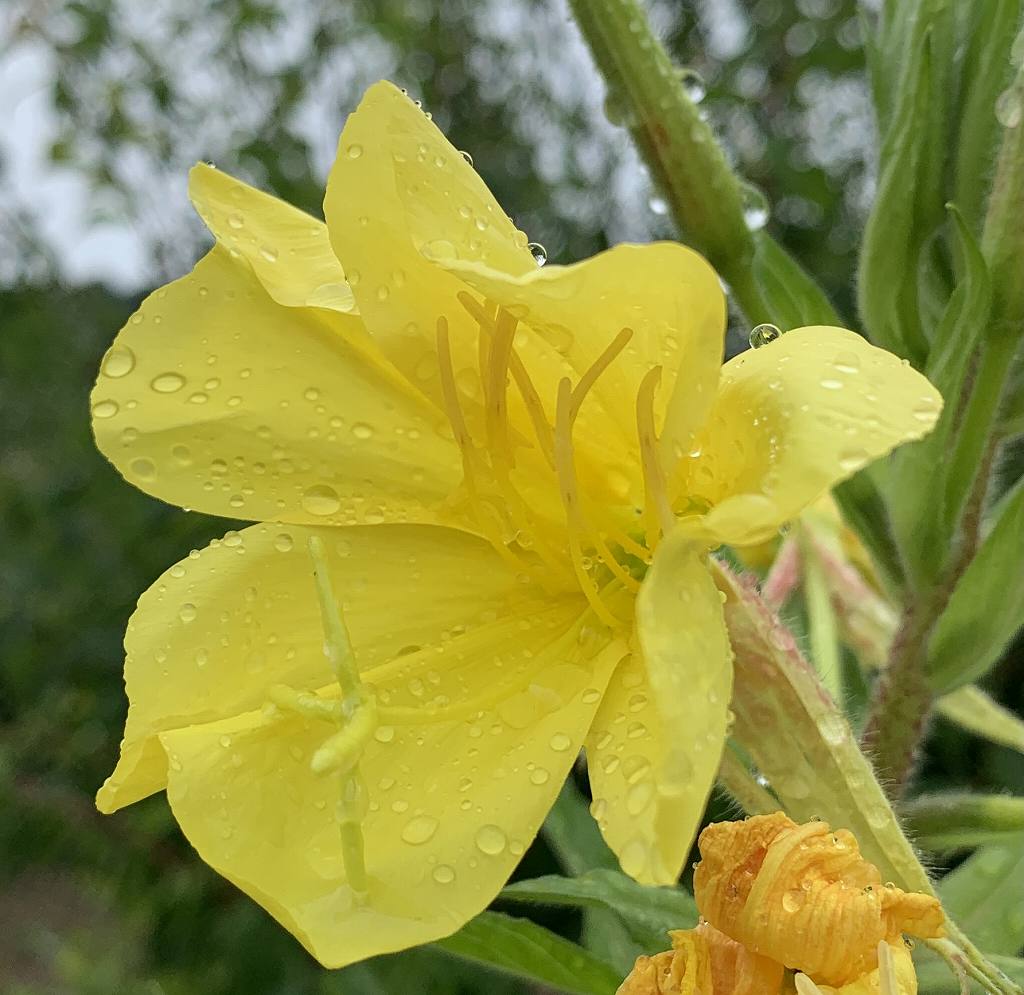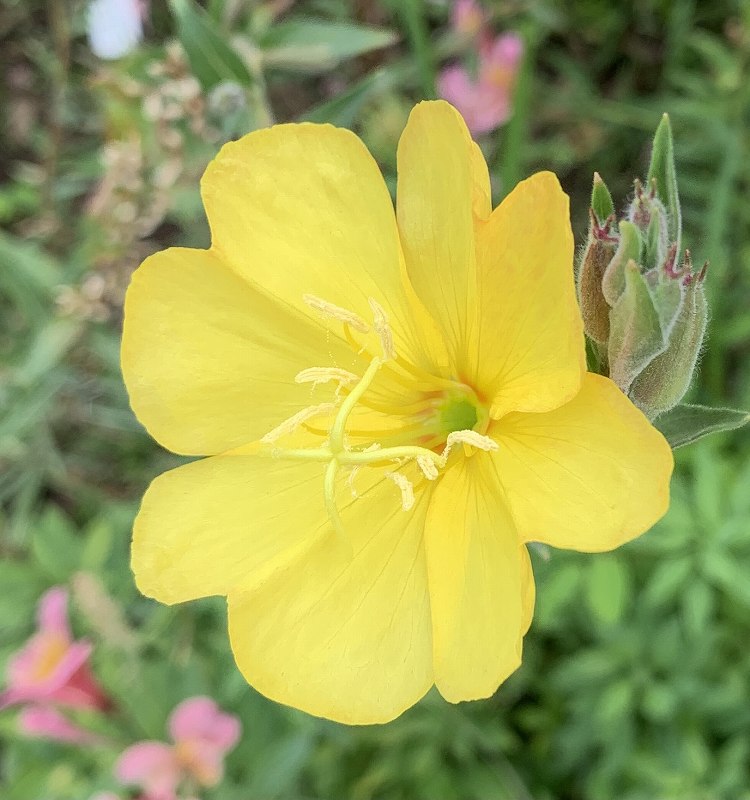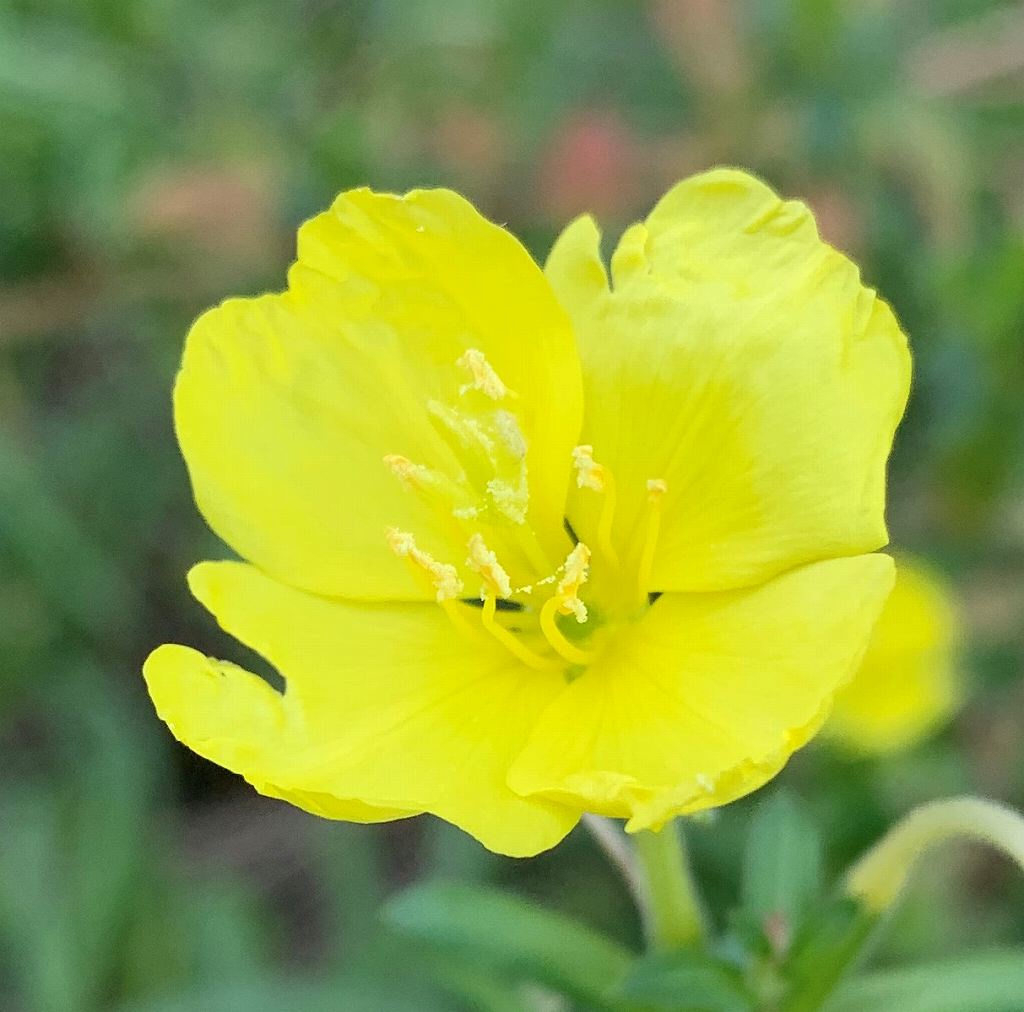マツヨイグサは同属で黄色い花の系統が4種類あります。太宰治著『富嶽百景』に出てくる月見草はマツヨイグサのことです。
Evening primrose has four types of yellow flowers of the same genus. “Tsukimisou” in “Fugakuhyakkei” by Osamu Dazai refers to evening primrose.
【仮名】マツヨイグサ
【和名】待宵草
【英名】Evening Primrose, Sundrops
【学名】Oenothera stricta
【誕生】06/ 21, 07/ 22
【開花】06, 07, 08月
【花色】Yellow



マツヨイグサ
アカバナ科マツヨイグサ属の一年草です。黄色い花の系統はマツヨイグサ、オオマツヨイグサ、メマツヨイグサ(アレチマツヨイグサ)、コマツヨイグサの4種類。マツヨイグサとコマツヨイグサは花が萎むと赤くなる一方、オオマツヨイグサとメマツヨイグサはそれほど赤くなりません。
さらに白~ピンク色のツキミソウや淡紅色のユウゲショウは同じマツヨイグサ属の近縁種。花言葉もツキミソウと似ていて「浴後の美人」「気まぐれ」「無言の愛情」「移り気」です。太宰治『富嶽百景』の「富士には、月見草がよく似合ふ」は富士山の雄姿と、けなげなツキミソウとを対置させた有名な一文ですが、これはツキミソウでなくマツヨイグサ。そのちょっと手前のクダリで「黄金色の月見草の花ひとつ」とあります。マツヨイグサとツキミソウは英語も同じEvening primerose。
わが国には19世紀半ば頃から黄色系統がマツヨイグサ、オオマツヨイグサ、メマツヨイグサ、コマツヨイグサの順に渡来し、戦後にユウゲショウやヒルザキツキミソウが帰化。そして、黄色系統では近年、グリホサート系の除草剤に耐性があるメマツヨイグサが優勢になっています。
若葉はサラダや天ぷらなどに利用でき、 花もほのかに甘くそのまま食べられるそうです。除草剤が気にならない方(?)はぜひお試しください。
Evening Primrose
It is an annual plant of the genus Evening Primrose in the family Evening Primrose. There are four types of yellow flowers: Matsuyoigusa, Ohmatsuyoigusa, Mematsuyoigusa (Arechimatsuyoigusa), and Komatsuyoigusa. Matsuyoigusa and Komatsuyoigusa turn red when the flowers wither, while Ohmatsuyoigusa and Mematsuyoigusa do not turn so red.
Furthermore, white to pink Tsukimisou and pink Yuhgeshou are closely related species of the same evening primrose genus. The flower language is similar to Tsukimisou, which is “beautiful woman after bath”, “capricious”, “silent affection”, and “movement”. “One Hundred Views of Tomitake” by Osamu Dazai is a famous sentence that contrasts the male figure of Mt. Fuji with the Tsukimisou, but this is not the Tsukimisou but the Matsuyoigusa. Just before that, there is a sentence that says “One golden evening primrose flower”. Tsukimisou and Matsuyoigusa are the same in English as Evening primerose.
From around the middle of the 19th century, yellow primroses, Matsuyoigusa, Ohmatsuyoigusa, Mematsuyoigusa , and Komatsuyoigusa came to Japan in that order, and Yuhgeshou and pinkladies were naturalized after the war. In recent years, Mematsuyoigusa, which is resistant to glyphosate herbicides, has become predominant in the yellow line.
Young leaves can be used for salads and tempura, and the flowers are slightly sweet and can be eaten as they are. If you don’t mind herbicides (?), Please try it.


